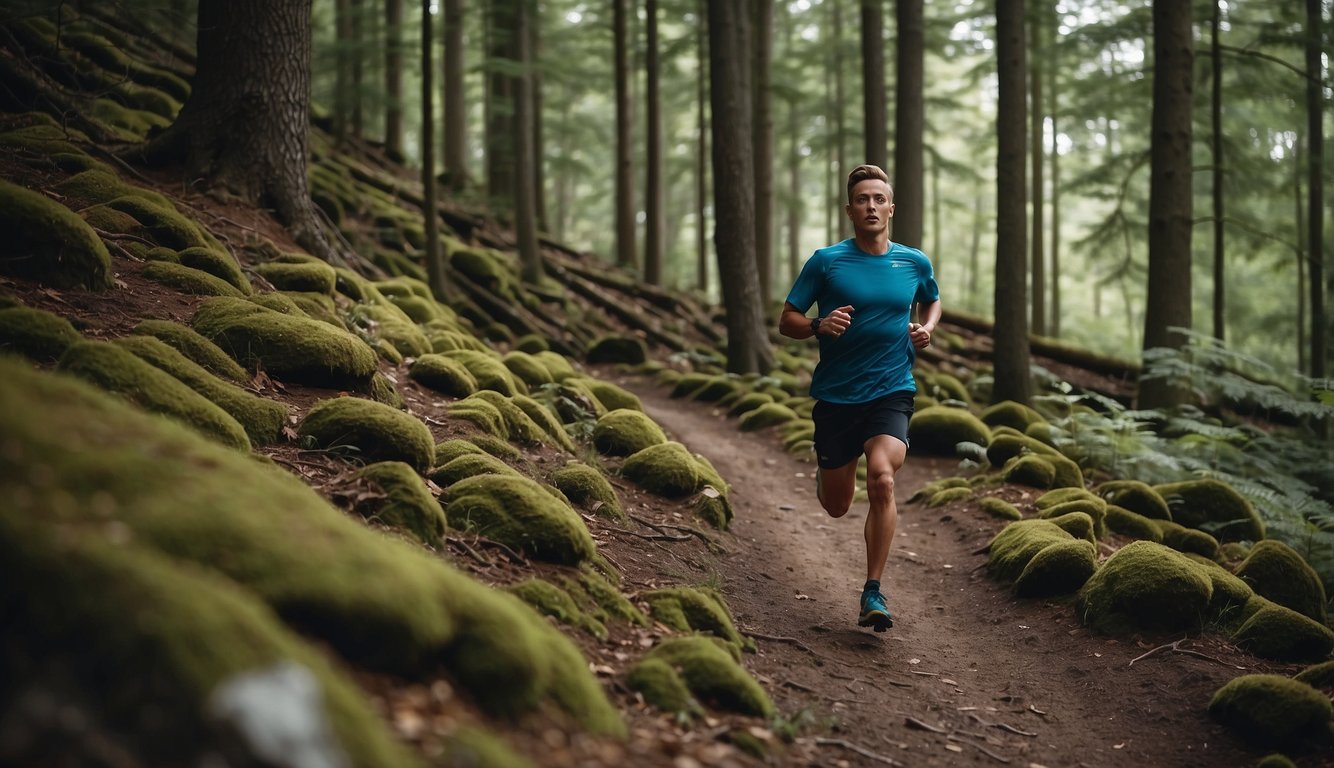Trail running is a fantastic way to get outside, enjoy nature, and get some exercise at the same time. However, it can be challenging to navigate trails if you’re not familiar with the area. In this article, I’ll share some tips for navigating trails during your run.

One of the most important things you can do before heading out on a trail run is to familiarize yourself with the area. This can include studying a map, using a GPS unit, or even just asking locals for advice. Knowing the terrain, landmarks, and potential hazards can help you stay on the right track and avoid getting lost.
Another tip for navigating trails during your run is to pay attention to your surroundings. Keep an eye out for trail markers, signs, and other indicators that can help guide you along the way. It’s also important to be aware of any changes in the trail, such as steep inclines or rocky terrain, so you can adjust your pace and footing accordingly. By staying alert and aware of your surroundings, you can have a safe and enjoyable trail running experience.
Preparing for Your Trail Run
Choosing the Right Gear
When it comes to trail running, choosing the right gear is crucial. Unlike road running, trail running requires more support and protection for your feet, as well as a hydration system to keep you fueled during longer runs. Trail shoes are designed to provide better traction and stability on uneven terrain, so it’s important to invest in a good pair. Consider getting gaiters to keep debris out of your shoes, and a headlamp for early morning or evening runs.
Understanding the Trail
Before hitting the trail, it’s important to understand the terrain and elevation gain. Topographic maps can be helpful for this, as well as GPS devices or smartphone apps like Gaia or AllTrails. Knowing the natural obstacles such as rocks and roots can help you plan your route and adjust your pace accordingly.
Planning Your Route
Plotting your route ahead of time can help you stay on track and avoid getting lost. Consider the mileage, elevation gain, and weather changes when planning your route. It’s also important to be mindful of other trail users and wildlife.
Trail Running Techniques
Trail running requires a different set of techniques than road running. Quick feet and a power hike can help you navigate technical terrain and inclines. Focus on maintaining a balanced gait and engaging your core for added strength and stability.
Safety and Etiquette
Safety should always be a top priority when trail running. Always carry a first-aid kit and be prepared for any weather changes. It’s important to practice trail etiquette and be respectful of other trail users. Keep a positive vibe and enjoy the journey.
Preparing for a trail run takes practice and experience. Start slow and gradually increase your mileage and pace. Remember to stay hydrated and fuel your body with gels or other snacks. With the right gear and techniques, trail running can provide numerous benefits for both the mind and body.
After the Run
Cooling Down and Recovery
After finishing a trail run, I always take some time to cool down and recover. This helps me to avoid muscle stiffness and soreness that can come with a hard workout. I start by walking for a few minutes to let my heart rate come down gradually. Then, I stretch my muscles, focusing on my legs, hips, and lower back. This helps to improve my flexibility and prevent injuries.
Reflecting on Your Experience
Reflecting on my trail running experience is an important part of my post-run routine. I take a few minutes to think about how I felt during the run, what I enjoyed, and what I could improve next time. This helps me to stay motivated and make progress towards my fitness goals.
Sharing and Improving
Sharing my trail running experience with others is a great way to improve my skills and learn new tips. I often talk to other trail runners in my community, asking for advice and sharing my own experiences. I also use online resources like AllTrails and Strava to find new trails and connect with other runners.
Overall, taking care of my body and mind after a trail run is just as important as the run itself. By practicing good habits like stretching, hydration, and reflection, I can improve my strength and fitness while enjoying the journey and the destination.

